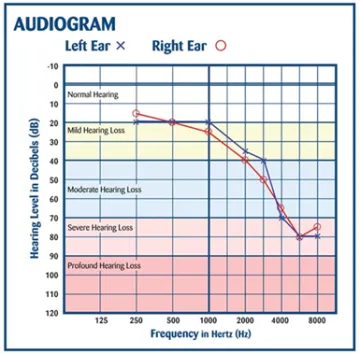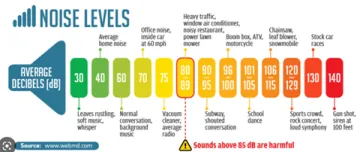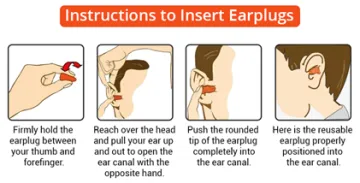Hearing loss is painless, permanent, and progressive, but most importantly, PREVENTABLE.
Risk Management Services (RMS) and Research Laboratory and Safety Services (RLSS) administer the University of Arizona’s Hearing Conservation Program (HCP). The goal of the HCP is to prevent occupational noise-induced hearing loss among UA workers that are exposed to hazardous noise. See the HCP Written Program or the FAQ’s below for more information.
The Hearing Conservation Program provides the following services:
- Workplace noise assessments
- Baseline and annual audiometric testing
- Training on the use of hearing protection devices
- Control of hazardous noise
- Record keeping
Audiometric Testing Clinic
Location: 1717 E Speedway, Suite 1112 Tucson, AZ 85719
Telephone: 520-621-7698
Email: occhearing@arizona.edu
Frequently Asked Questions
Please see the HCP Written Program for more detailed information.
According to OSHA, workers that are exposed to an eight-hour average of 85 decibels (dB) must be enrolled in the HCP. RLSS and RMS take a conservative approach to HCP enrollment and generally include all workers that may work in a noisy location or perform tasks (like using power tools) that may place them near this threshold. If you feel that your job does not expose you to loud noise, please contact occhearing@email.arizona.edu to initiate an assessment of your noise exposure to determine if you can be exempted from annual testing.
OSHA requires all workers enrolled in the HCP to participate in a baseline, within 6 months of hire, and annual audiometric screening (hearing test). These screenings evaluate your threshold of hearing at a variety of frequencies, or pitches. Annual evaluations allow RLSS and RMS to compare your results over time and identify potential losses early on to help prevent further damage due to occupational noise exposure.
An HCP representative or your supervisor will notify you when it is time for your annual evaluation. You will be provided with a link to schedule a 30-minute appointment. For your first test, please work with your supervisor to schedule the time of your appointment so that you will not be exposed to noise for 14 hours prior—this is best accomplished by having your evaluation as early as possible during your workday.
After you complete the evaluation, the HCP clinician will provide you with an audiogram (example below) and a brief description of what it shows. You will also be contacted within a few weeks with the interpretation of your results by a licensed audiologist.

Source: The National Hearing Test
If the results of an annual audiometric evaluation show any abnormal results or indicates a potential loss, RLSS and RMS will coordinate further care with an audiologist to determine whether the hearing loss is likely due to workplace exposures. Once a determination has been made by the audiologist, potentially supported by workplace noise monitoring, you may be referred to UArizona’s Worker’s Compensation coordinator.
OSHA states that noise levels over 85 decibels (dB) are hazardous. This is equivalent to being around a food blender, heavy traffic, a noisy restaurant, or a movie for the entirety of your workday. Some research shows that even lower noise levels may begin to negatively impact hearing. The 3-foot rule is a quick way to determine whether a noise level is harmful-if you must raise your voice or shout to be heard by a person 3 feet away, the noise level is likely hazardous. Another way is to download and utilize the NIOSH Sound Level Meter App on your phone.

Source: WebMD
Hearing protection devices (HPDs) provide differing levels of protection. Earplugs generally provide more protection than earmuffs but must be inserted appropriately. Make sure to follow the instructions in the graphic below when inserting earplugs. Check the rating of your earplugs before use and ensure they can protect you from the level of noise you encounter. In areas where the sound level is above 100 dB (equivalent to a train’s loudness), use dual protection (muffs AND plugs).

Source: Moglix
If the hearing protection provided at your workplace does not work for you, for any reason, contact occhealth-hearing@email.arizona.edu to try out different options.

